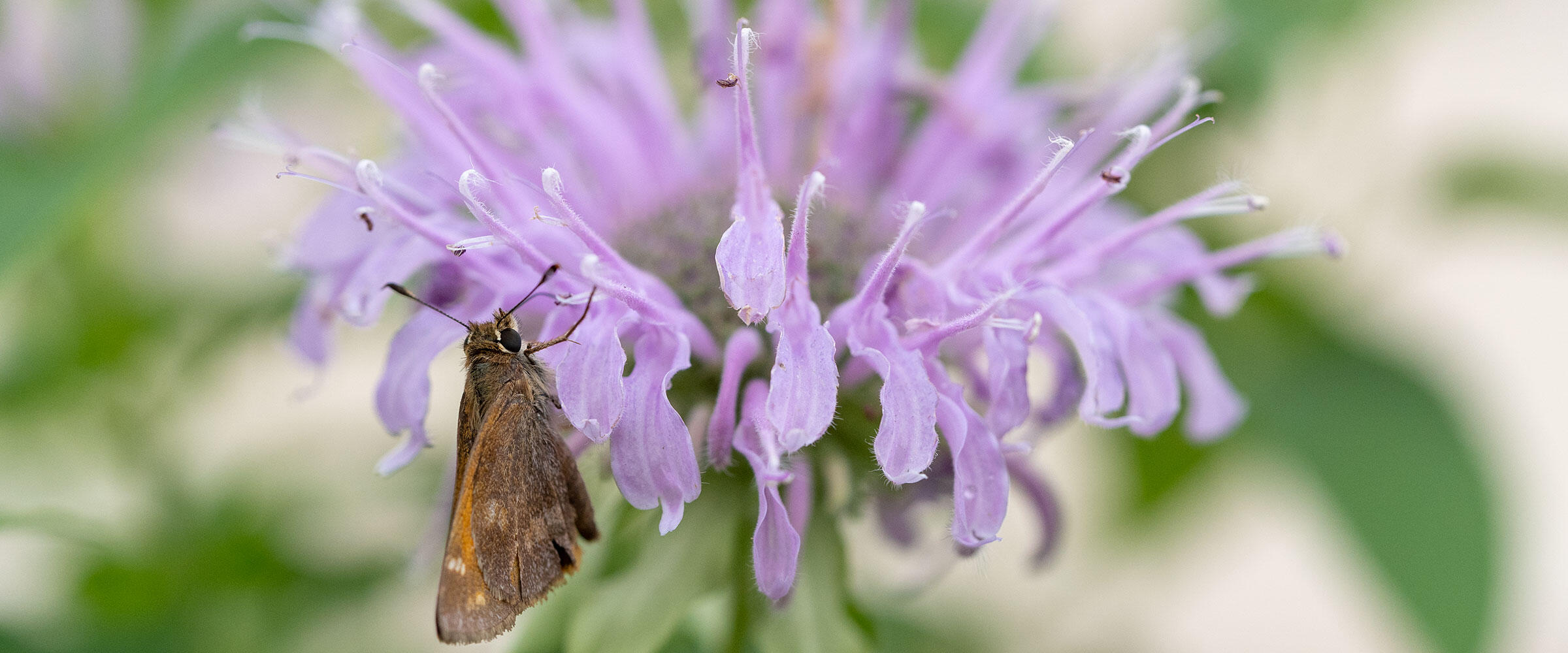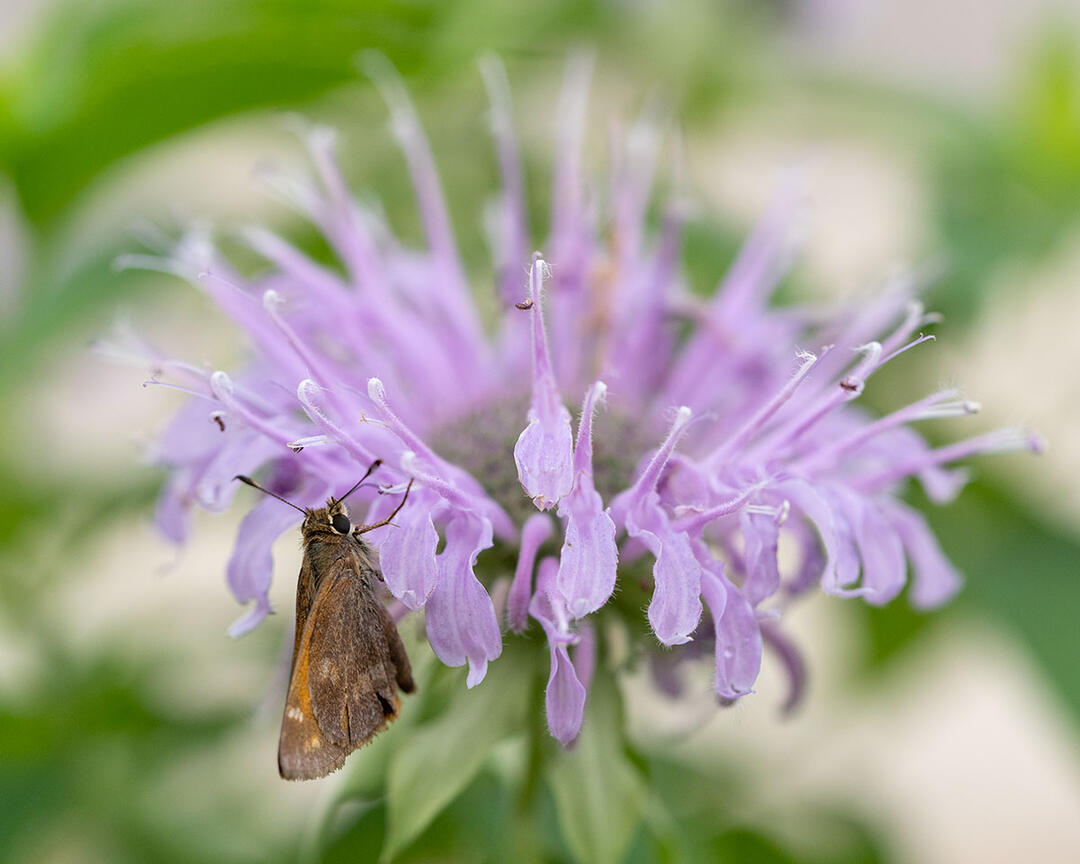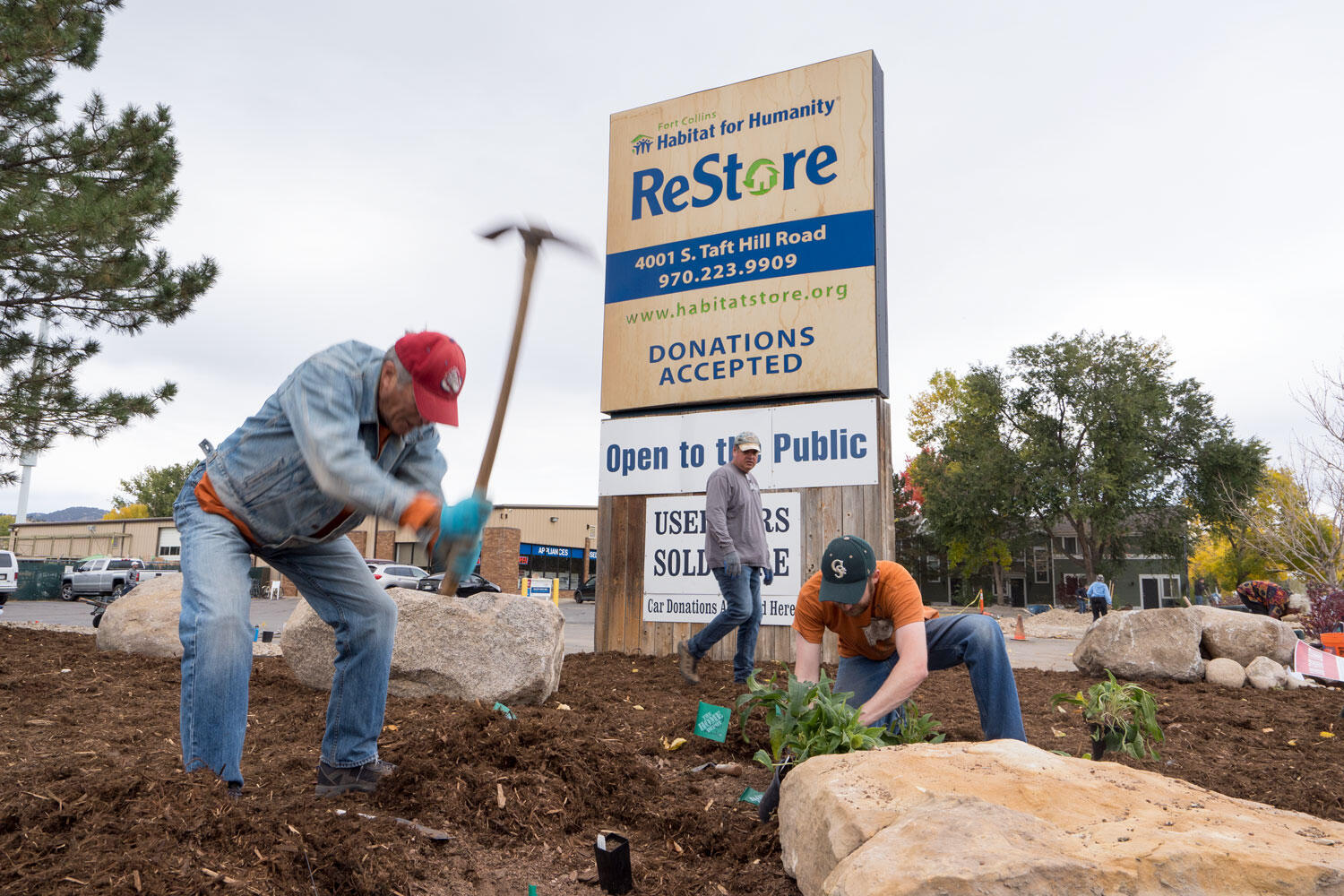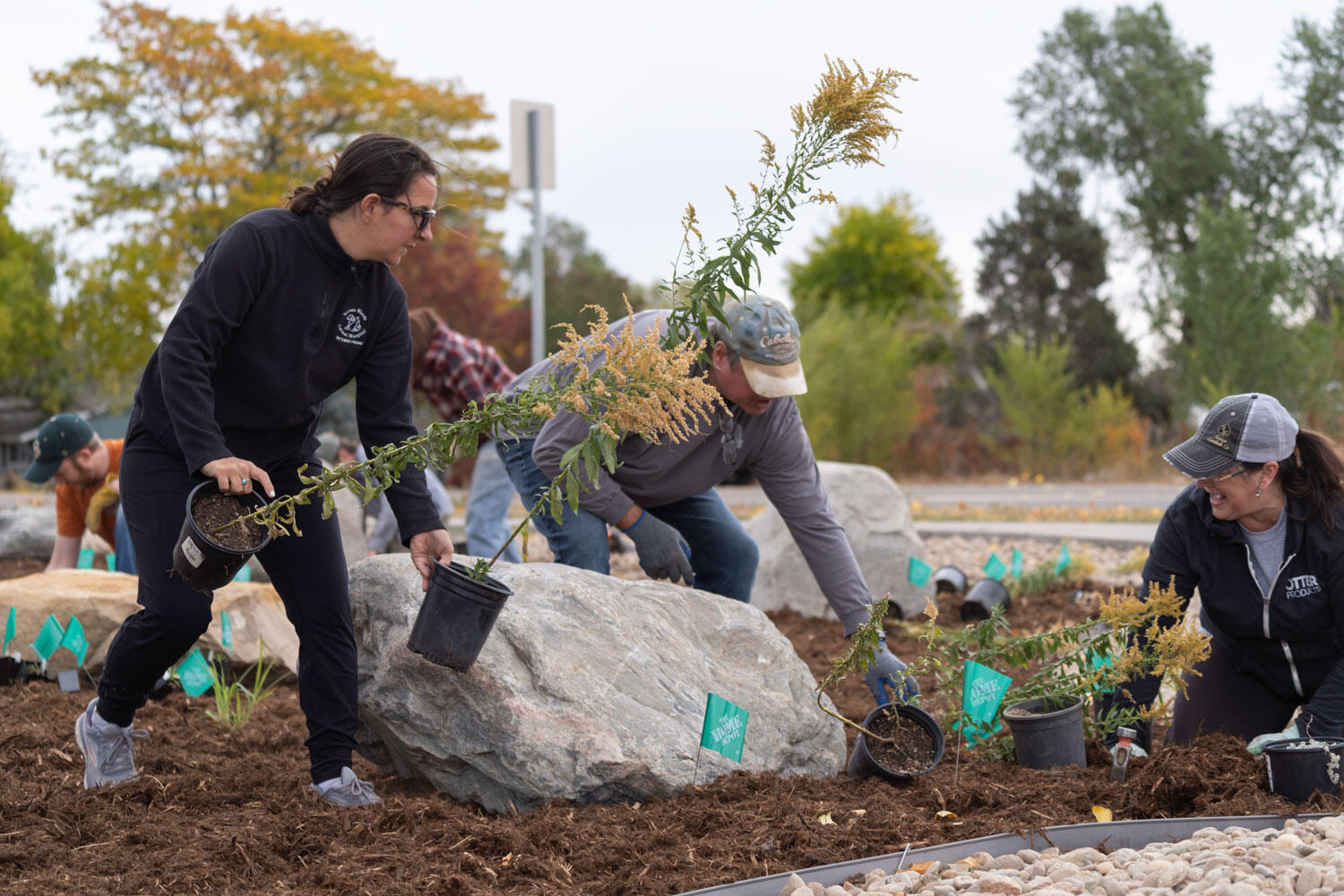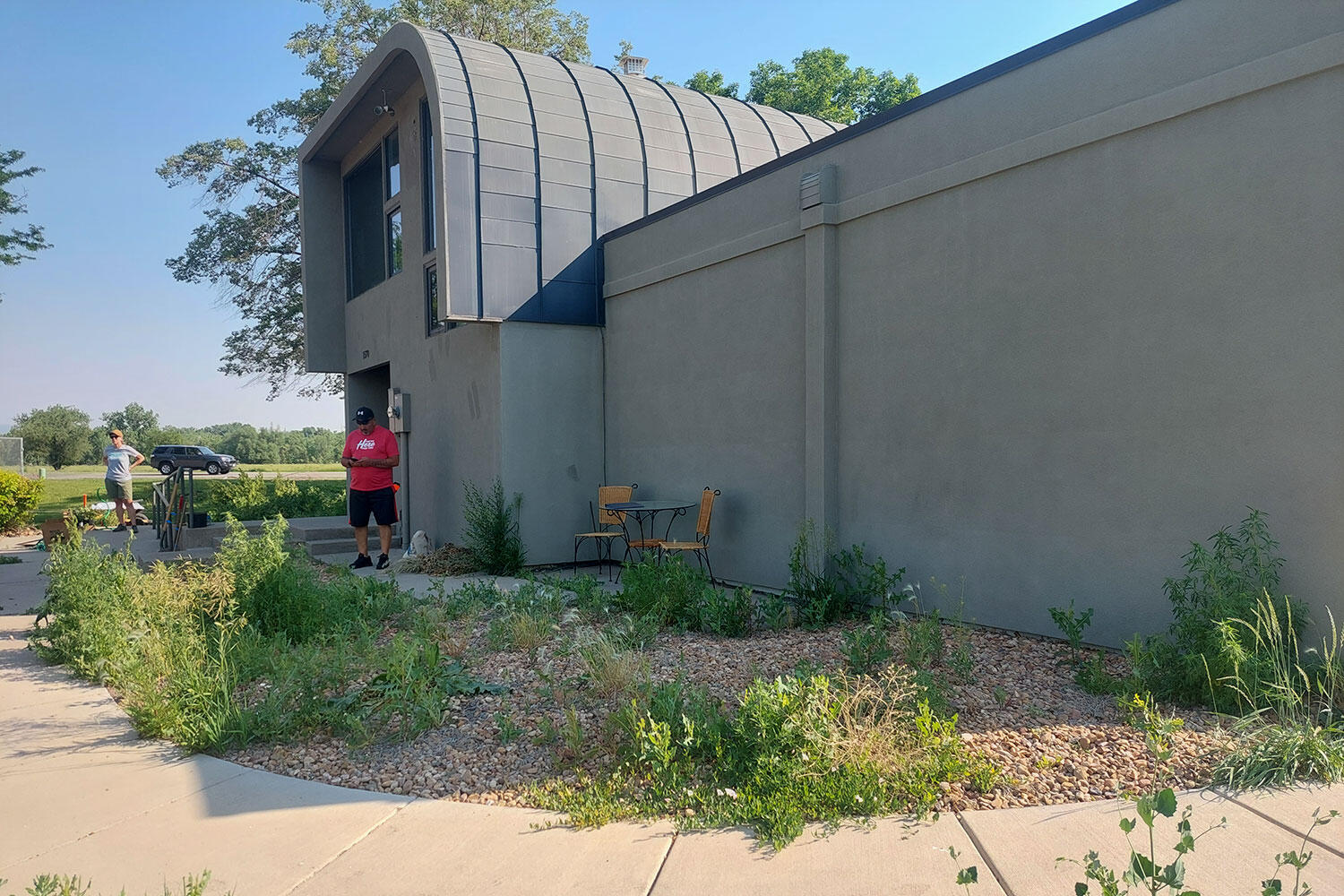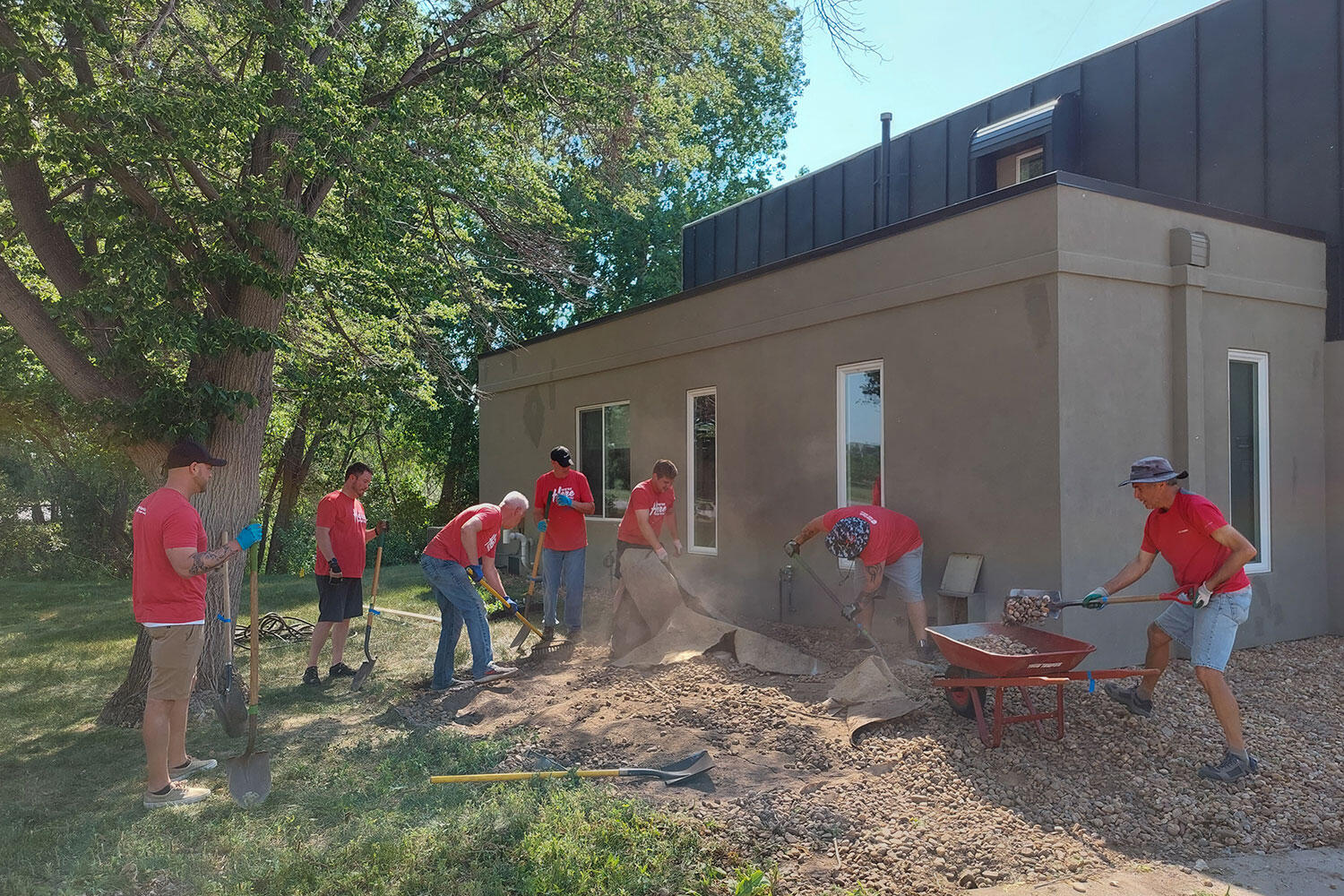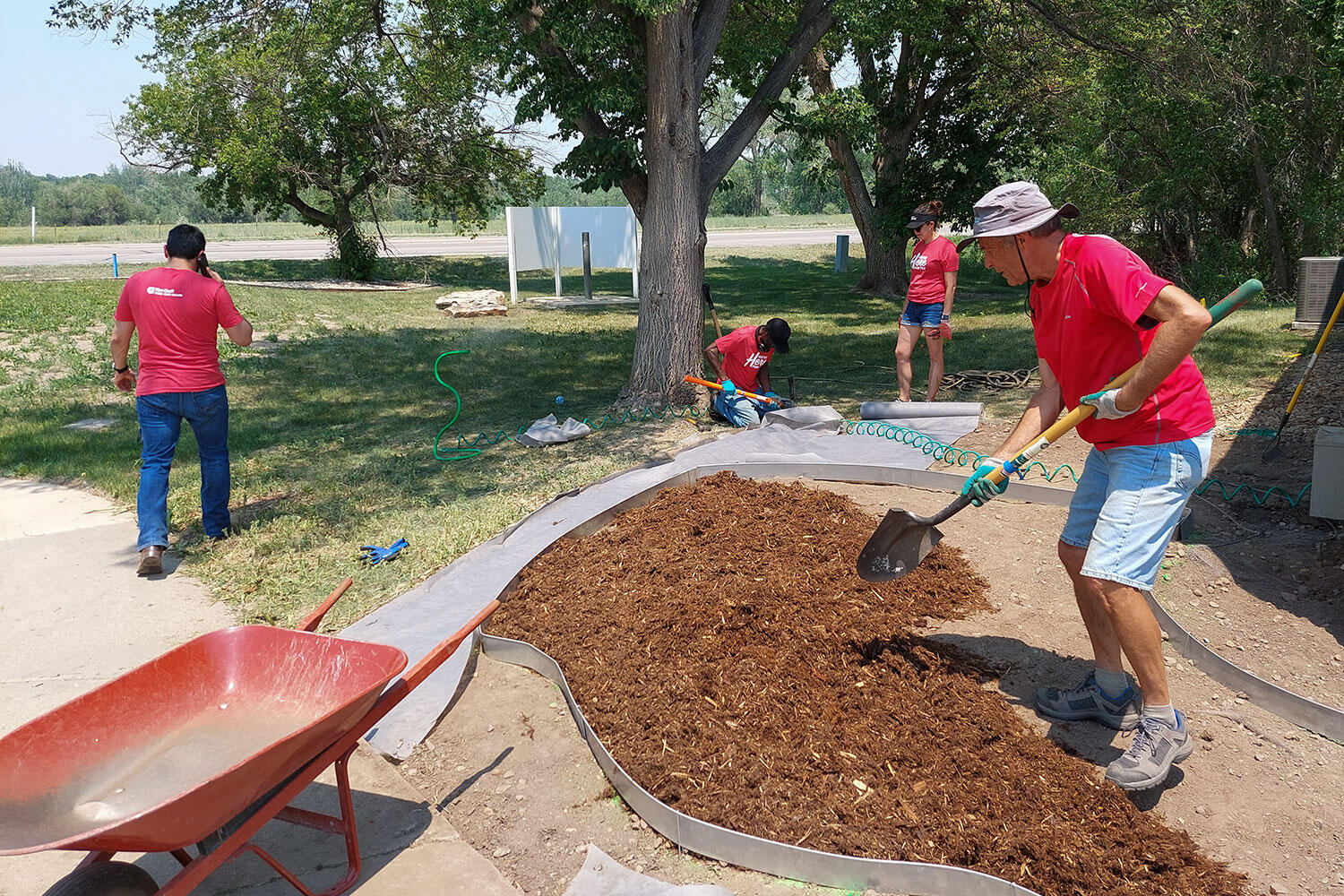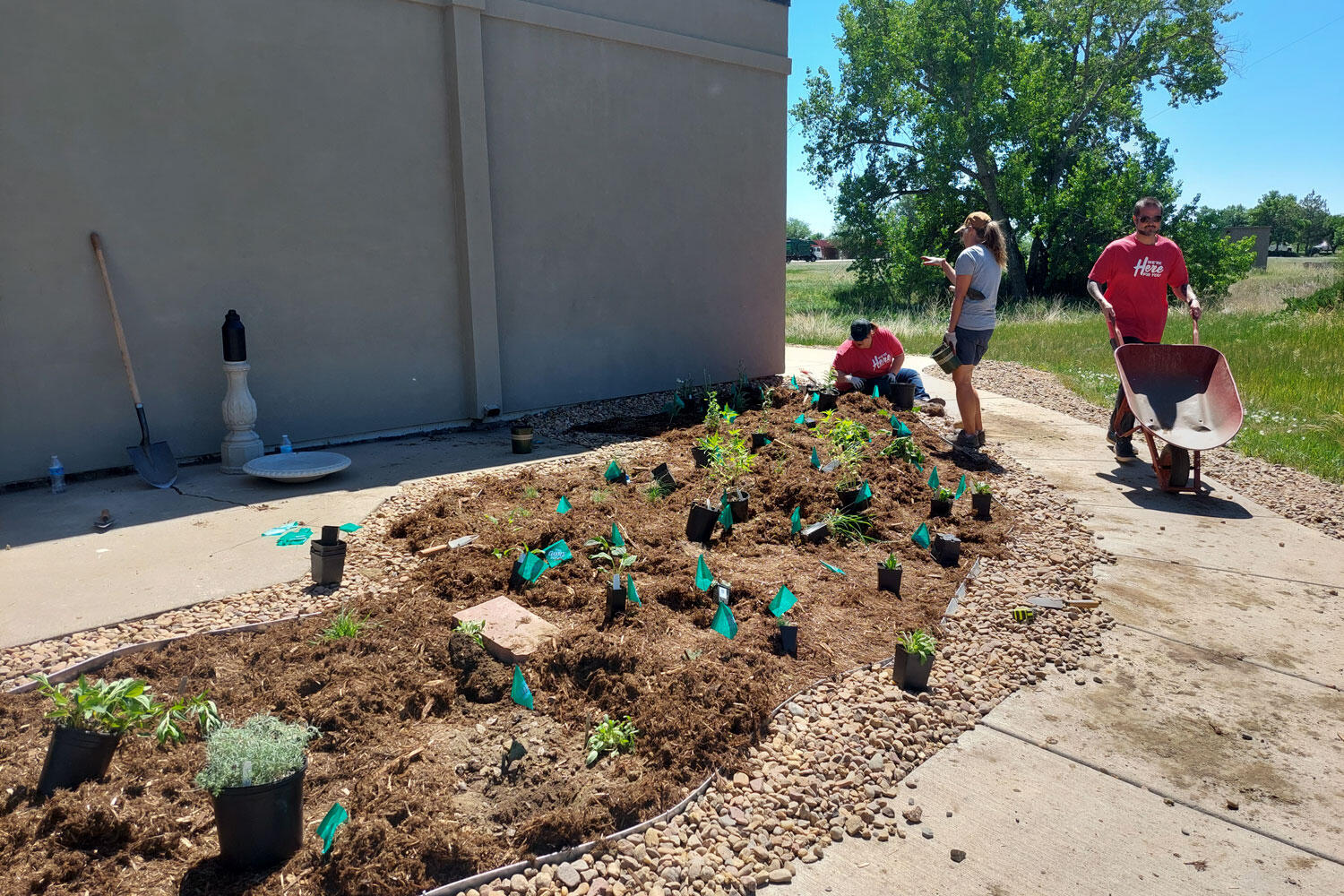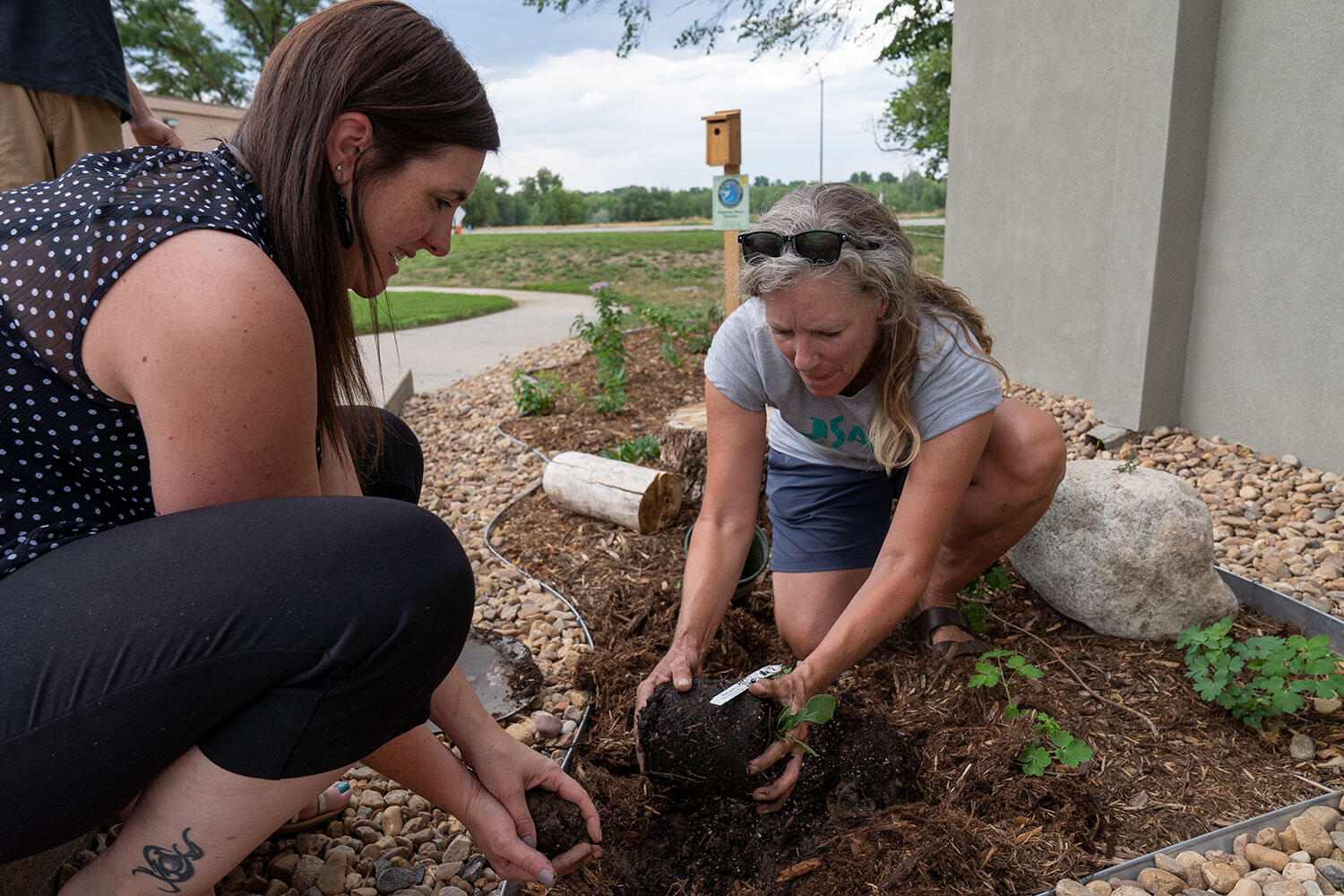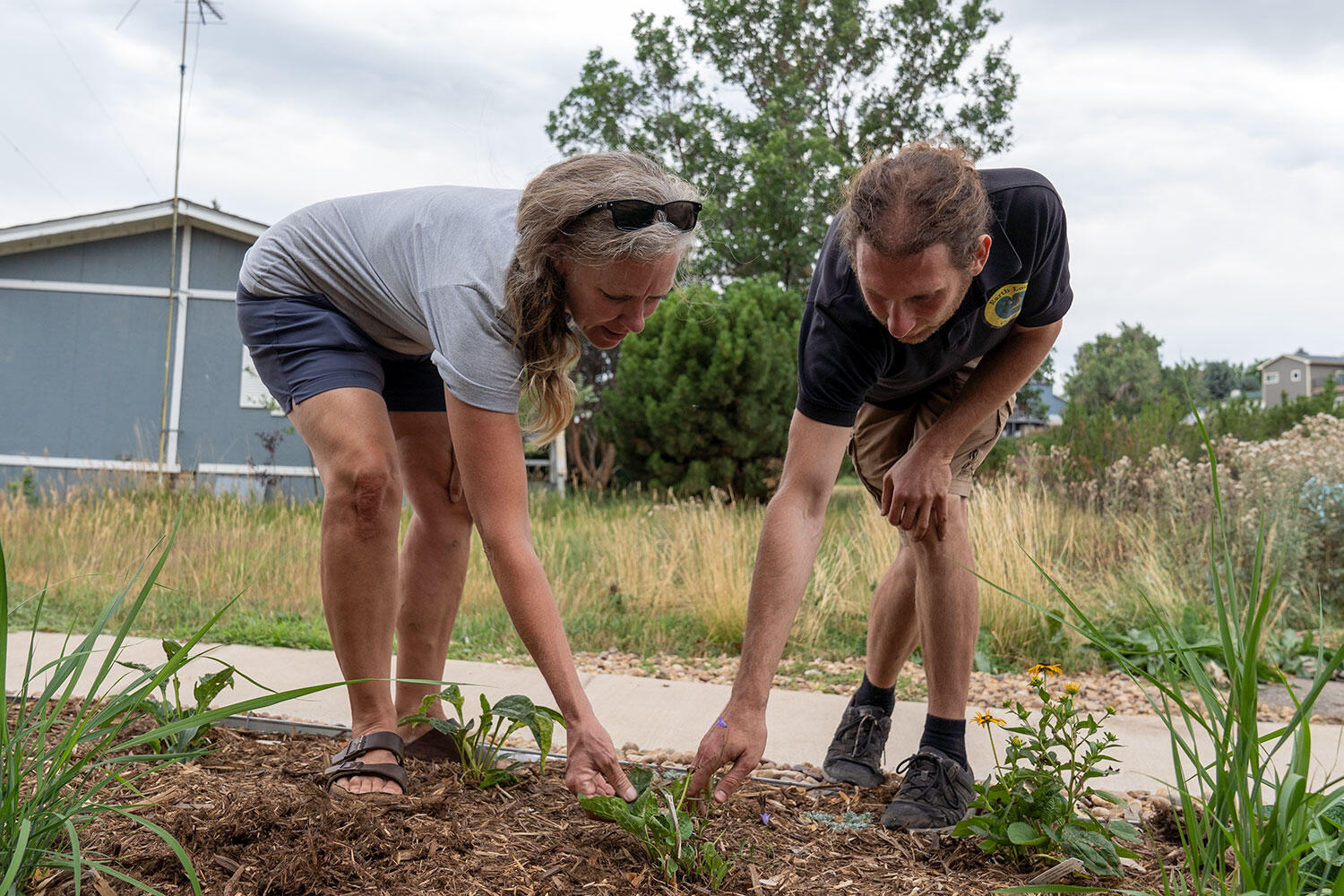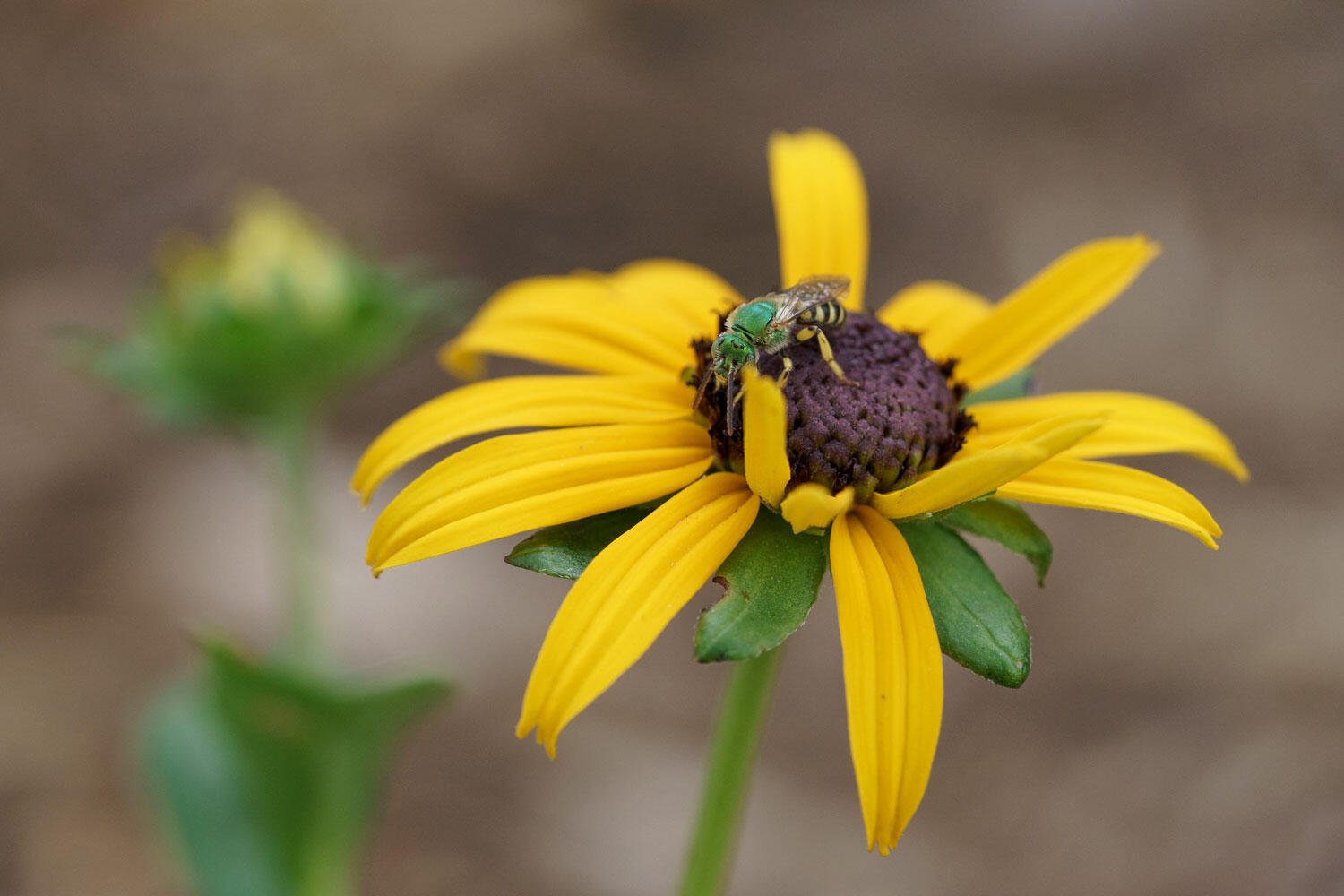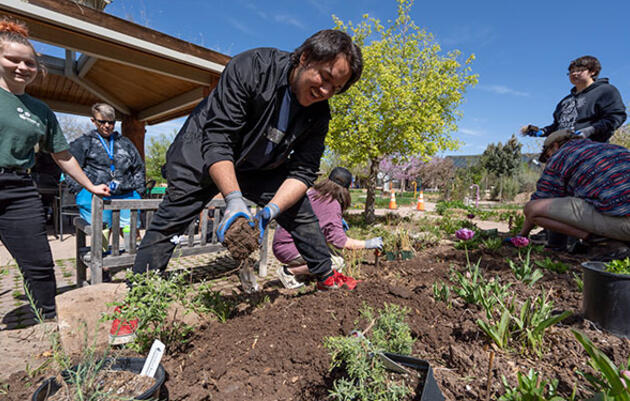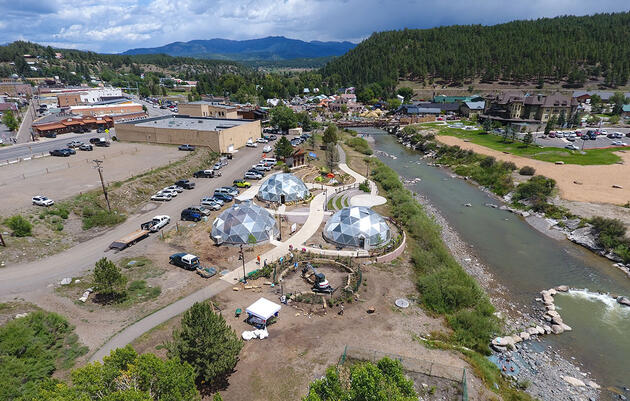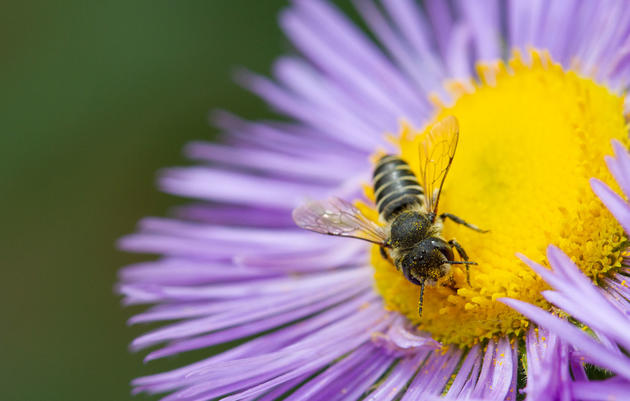We have a saying at Audubon: “Where birds thrive, people prosper.” It’s a theme that connects our conservation programs to the well-being of people. Bird-friendly gardening relates closely to this idea, but sometimes it can be hard to remember how it plays out in real life.
Earlier this month, I visited the Sexual Assault Victim Advocate Center (aka SAVA) to learn about the meaning behind a bird-friendly garden they recently asked us to help create. What I heard inspired me more than I could’ve imagined.
The Need for a Garden
SAVA is a nonprofit in northern Colorado that provides crisis intervention, advocacy, and counseling for people affected by sexual violence. They recently opened a new office in Loveland, Colorado, on an out-of-the-way street. When they moved in, the building was excessively beige and the entrance was weedy. It’s hard enough to go to a sexual assault center, so SAVA’s staff wanted to make it more welcoming. Planting a garden was a natural start.
In SAVA’s conference room, I met with Amanda Olivier, executive director of SAVA, Amy Dondale, a longtime SAVA volunteer, and Aaron Michael, owner of Earth Love Gardens and designer of SAVA’s new garden. Plants are a big part of SAVA’s work. Amanda explained, “All of our therapy offices have plants in them. I mean, some of them are wicked green. Something about growing life is just calming.”
After more than two years of COVID, SAVA’s staff needed a source of calm more than ever. “The SAVA staff has had an extremely hard two years. Not everybody is safe at home,” explained Amy. Violence rose during the pandemic and SAVA’s caseload skyrocketed. “So the staff has really had some grueling, exhausting days,” she said.
A garden—something vibrant and beautiful—provided a much-needed reprieve. It was something positive their staff could celebrate and work towards.
Why a bird-friendly garden though? “That was probably me,” answered Amy, who had already been interested in planting native plants in her yard. She volunteered at a Habitat Hero garden planting at the Habitat for Humanity ReStore in Fort Collins in 2021. “That just really made me very excited about the whole idea of landing spots for birds,” she said. In fact, at the event, she talked to Jamie Weiss, Habitat Hero coordinator, and asked her how to get an organization signed up for a garden.
Making It a Reality
One of the first steps was finding funding. Fortunately, Ken Garff Ford and Comcast Colorado donated $5,000 and $2,500, respectively, to create the garden. Audubon contracted Earth Love Gardens to design it. In his design, the CEO and founder of Earth Love Gardens, Aaron Michael, selected plants with purple flowers to facilitate calmness and placed tall grasses to provide a sense of shelter. All that was left was finding help to plant it.
Luckily, Ken Garff Ford has an employee volunteer program, and we invited them to help plant the garden over three days last July. In the end, more than 50 volunteers attended, a number far greater than SAVA’s staff expected.
“My staff cried multiple times, to be honest,” said Amanda. “People really showed up for us. That’s…that’s a lot for us, because you just don’t always feel supported in this work.” Sexual violence is such a heavy, uncomfortable topic. People don’t want to talk about it or know how to deal with it, according to Amanda. “But by having an opportunity to come plant a plant with us, they could step up,” she said.
The volunteers weren’t connected to SAVA before the event, but according to Amanda and Amy, many of them did have a connection to sexual violence. “Every one of them absolutely knows someone. We all do. Those are the unfortunate statistics,” said Amanda.
Reactions to the Garden
When I first walked up to SAVA’s Loveland office, the purple blooms of bee balm and yellow petals of black-eyed Susans greeted me. I was excited to see a native leafcutter bee and skipper butterfly already drinking nectar from them. Green leaves from many other plants too new to bloom were swaying in the breeze of approaching rain clouds.
SAVA’s staff are happy with the garden too. “Already people have favorites. That bee balm is a popular plant!” laughed Amy. One of Amanda’s staff told her that she smiles when she walks up to the building now. In an email thanking Amy for her work on the garden, one SAVA employee wrote, “It looks so beautiful, and it feels so nice to walk into a well-maintained, well-manicured building. There is no doubt that our clients will be positively impacted by this addition- it’s hard enough to walk into SAVA to receive services, but I think an attractive exterior will make it just a touch easier.”
“Now there’s a different pride in ownership because we have this beautiful garden that we want the whole building to live up to,” said Amanda. “That really means a lot when my staff can feel really proud of the space they’re in. They need that.”
The gardens’ healing benefits will extend to SAVA’s clients, too. Amanda thinks therapists might use it for child therapy. She also thinks it could be a good place for parents to sit while their kids are in therapy. Kids sometimes yell during therapy, she explained. It’s a healthy process, but it can be distressing for parents to hear. So the garden can make the process a little bit easier for parents in that way.
More Than a Garden
After the interview, I left SAVA feeling energized and inspired in ways that I didn’t expect. The garden means and represents so much to their staff. “What happened outside kind of represents [our] work too, right? It was transformative,” said Amanda. “And that’s what we hope by people coming to SAVA, that they’re able to transform through healing."
When my head’s in the weeds, I sometimes lose sight of the bigger picture of the gardens we help plant, but Amanda brought it out again for me: “This isn’t just a garden; this is a cause people want to support.”
When Aaron explained how he designed the garden to create a sense of security for SAVA’s visitors, it struck me that a bird-friendly garden does the same thing for birds. It creates a place where birds—and people—can prosper.

